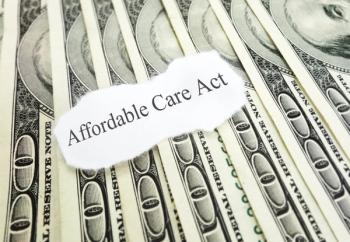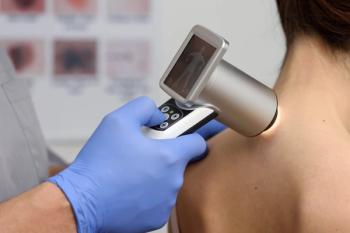
How Rural Hospitals Are Benefiting from Remote Patient Monitoring
Patients who live in rural areas incur a variety of costs attributed to physically getting into the office to meet with their doctor when the need arises. When those patients require more frequent visits for chronic disease management, the cost of transportation, missed work, out-of-pocket copays, and any number of other costs can become a substantial barrier to care.
Rural hospitals face myriad unique challenges that often affect both their financial health and the health outcomes of the patients they serve. Obstacles including lower patient volume, a higher population of aged patients with chronic diseases, and a greater utilization of government-sponsored payer programs such as Medicare and Medicaid all leave rural hospitals scrambling to make ends meet while trying to maintain patient access to quality care.
To help offset such challenges, some rural hospitals have begun to focus on diversifying the care they offer and provide their patients, better helping ensure these hospitals meet patient health needs effectively and efficiently while creatively sustainable revenue streams. One way rural hospitals are achieving both goals simultaneously is through the adoption of telehealth services like remote patient monitoring, also referred to as RPM.
RPM can be the bridge that brings quality healthcare to vulnerable patients with chronic health conditions. RPM typically requires fairly simple technology for the hospital and its patients, from the system the hospital uses for its RPM program management to the devices patients use. This makes RPM easily adoptable into rural healthcare settings, thus allowing clinicians to follow patients into their rural homes or workplaces.
Through internet and cellular connections, RPM can serve patients residing in outlying areas of our country, giving them access to quality healthcare services and resources that may have previously been difficult or impossible to receive due to the burden of time, expense, distance, and other barriers.
Furthermore, the timing is ripe for rural hospitals to adopt telehealth and RPM. The federal government, via the Federal Communications Commission, is pushing for and providing significant funding for these services through its
In recent
Let's take a closer look at why rural hospitals are adding RPM to their arsenal of care.
Easier access to quality care
Americans living in
By providing patients with qualifying chronic health conditions access to RPM, rural health systems are helping prevent disease progression and acute exacerbations as well as reduce the need for hospital admissions, readmissions, and more frequent emergency care. However, the benefits don't end at better patient health outcomes: Keeping patients healthier keeps rural hospitals financially stable by reducing the overall cost of resource utilization.
Additional, sustainable revenue stream.
Covered by Medicare and a growing number of private and public payers, RPM is helping bring additional — and potentially significant — revenue into rural hospitals. As evidenced by the CDC, rural patients tend to disproportionately suffer from chronic disease, meaning RPM services are not only necessary in rural healthcare populations, but also very sustainable. With RPM reimbursements averaging about $100 per patient per month, the initial investment required to establish a program is usually recovered in a short period.
Cost-effective for patients, hospitals, and payers
RPM offers a cost-effective solution to providing patients with quality care while minimizing the financial burden to stakeholders across the continuum of care, from the patient to the payer.
Patients who live in rural areas incur a variety of costs attributed to physically getting into the office to meet with their doctor when the need arises. When those patients require more frequent visits for chronic disease management, the cost of transportation, missed work, out-of-pocket copays, and any number of other costs can become a substantial barrier to care. In some cases, the costs can be so substantial that many patients will often
RPM also helps hospitals better navigate some of their top challenges. They were already busy environments before COVID-19. Many hospitals are still overloaded with infectious patients while
After minimal use, most clinicians will gain workflow efficiency through an intuitive RPM system. Furthermore, the service allows them to share the burden of care with a qualified healthcare team, thus putting valuable minutes back into their day and allowing them to focus on patients who truly require in-person attention.
Payers also benefit greatly from RPM. Everything about a chronic disease is expensive; however, effectively managing symptoms, preventing disease progression, and avoiding emergency room care and hospitalization saves payers money. RPM for patients with chronic diseases can save payers thousands of dollars per patient per year. These dollars add up fast when one considers that the
Increased quality scores and higher patient satisfaction rates while helping increase patient engagement
RPM is providing rural health clinicians with powerful insights into their patients' daily lives and health, thus providing opportunities for better informed clinical decision-making. RPM empowers practitioners to make quick decisions based on real-time patient data, which in turn can lead to better health outcomes and mitigate acute disease exacerbations before they become an emergency.
For patients, RPM is simple and convenient, which in turn makes them more willing to actively engage and participate compliantly in their care plan. RPM provides patients with wraparound support, essentially holding their hand and guiding them through more effective disease management and potentially reducing symptom exacerbation and health emergencies, all while promoting personal responsibility over their health.
For rural hospitals, where every incoming dollar counts, keeping patients in a healthier outpatient status can translate into higher quality scores and more substantial reimbursements. RPM also provides an additional revenue stream that promotes efficiency and effective workflows.
Increased clinical efficiency while helping neutralize some of the effects of staffing shortages
It's no secret that one of the biggest challenges rural hospitals are facing is finding and maintaining
Due to these issues, achieving efficiency wherever possible is key. RPM is helping bring about the efficiency short-staffed rural hospitals so desperately need through a technology-based team approach to patient care.
Everyone wins with remote patient monitoring
Rural hospitals are uniquely positioned to create positive impacts in the communities they serve. When technologies such as RPM are effectively deployed within their patient care model, everyone wins. For patients, RPM can translate to higher quality, more frequent, and more convenient care while encouraging active engagement and personal responsibility over their own healthcare. For clinical teams, RPM can promote collaboration and efficiency and reduce clinician burnout.
For rural hospitals, RPM can equate to healthier patients, better patient satisfaction rates, improved quality scores, greater workflow efficiency, and a new revenue stream to help sustain their future operations as they work to meet the evolving needs of the communities they serve. While adding RPM will likely require some initial changes to existing workflows, it can be a great benefit to any rural hospital's patients and fruitful for their bottom line.
Lucy Lamboley is director of customer success for
Newsletter
Get the latest industry news, event updates, and more from Managed healthcare Executive.






















































